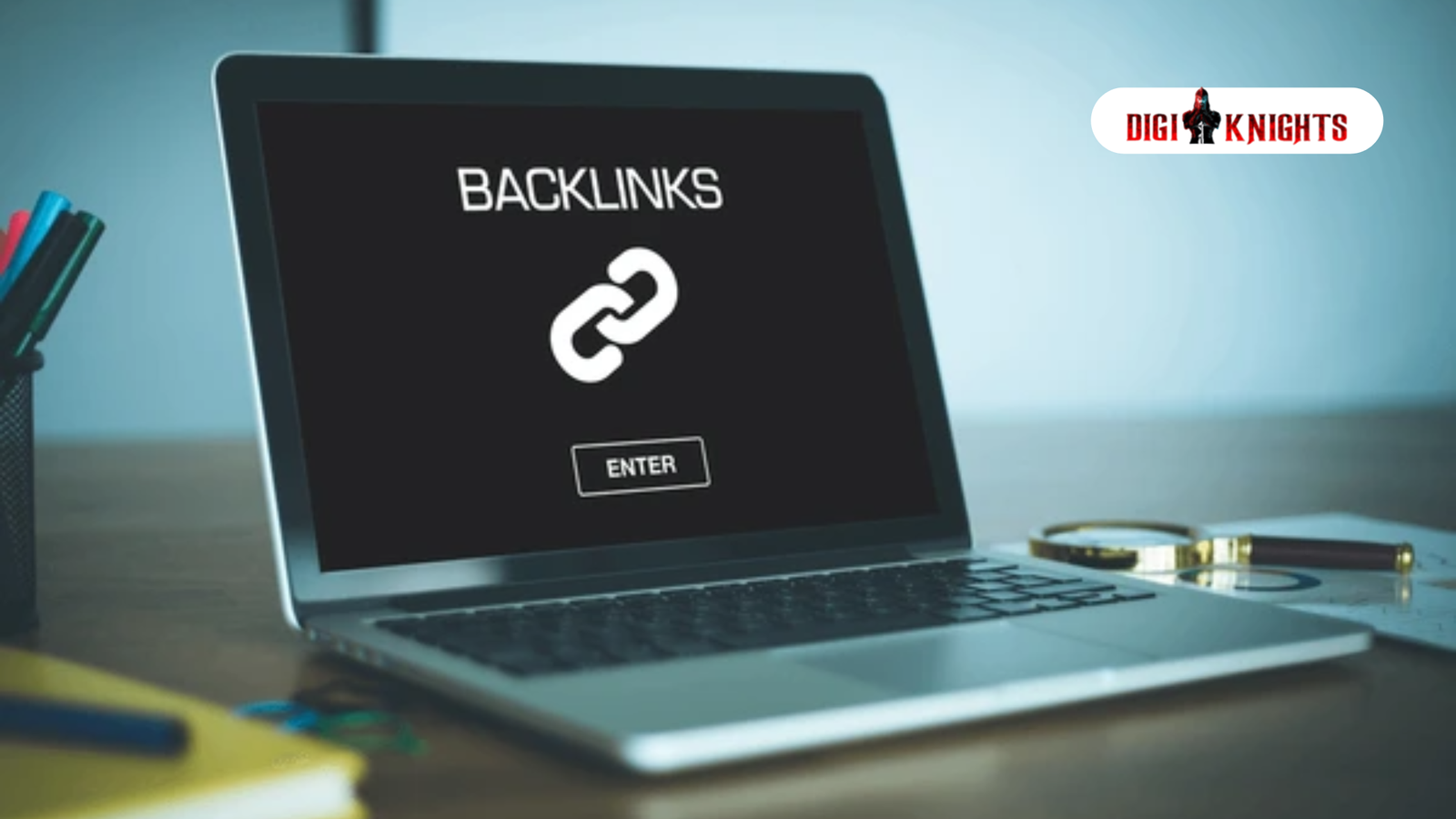Links pointing to your website from other websites are known as backlinks. To put it simply, they serve as votes that inform search engines that your material is valuable. But not all backlinks help your website grow. Some links come from shady or low-quality sites and can cause more harm than good. These harmful backlinks can pull down your search ranking and damage your online trust.
As a digital marketer and SEO expert will tell you, a strong SEO strategy must include checking your backlinks often. Ignoring bad links could cost you traffic, leads, and even your place in Google’s results.
What Are Harmful Backlinks?
Harmful backlinks are links from other websites that hurt your site instead of helping it. These links often come from untrusted pages or websites made only to sell links. Some of these sites are full of spam or fake content. Others link to many random pages that have nothing to do with your topic. If your site gets a link from these sources, it can damage your trust with Google.
Bad backlinks may also come from adult sites or gambling pages. They may use strange or fake words in the anchor text. Some even use the same words again and again to fool search engines. These tricks do not work today and can lead to trouble.
Google sees this as a sign that your site is part of a spam system. If it finds too many bad links, your rank can drop fast. If too many bad links point to your site, Google might stop showing it in search results for a while. So you must keep an eye on your links to stay safe. A good SEO strategy keeps your links safe and your website trusted.
Why Harmful Backlinks Hurt Your SEO
Harmful backlinks can lower your search rank and weaken your online trust. Every link leading to your website is reviewed by Google for quality. Your website can look untrustworthy if the links come from spammy or low-value sites. Your pages may rank lower in search results due to this.
Links from unrelated or fake websites send the wrong signal. They show that your site might be trying to trick the system. This can lead to a manual action or a drop in your site’s visibility. Your site can even stop showing up on Google if the problem gets too bad. This is why you need to check your backlinks often and stay alert.
Bad backlinks also waste your crawl budget. Google may spend time checking useless links instead of your good content. This slows down your SEO growth and delays new page updates.
A digital marketer and SEO expert will always check for bad links. They know that a clean link profile is a key part of any SEO strategy.
Common Sources of Harmful Backlinks
Many bad backlinks come from places that do not follow safe SEO rules. One common source is paid link farms. These websites were created specifically to sell backlinks. They may link to hundreds of sites on one page. These links look fake and offer no real value.
Another source is spam in blog comments or forums. People drop links without context just to build numbers. These links often lead to unrelated or low-quality pages. Search engines see this as a trick and may mark your site as risky.
Links from adult content sites or gambling pages can also hurt your site. Even if you did not ask for them, they still affect your trust score. Some sites are built only to trick search engines. If you get links from these places, your SEO can drop fast.
Harmful backlinks might also come from private blog networks. These are a group of websites owned by one person used to pass links between each other. Google is good at spotting this now. If you get caught using them, your rankings may drop.
To keep your site safe, avoid these link sources. A clean link profile is a key part of any honest SEO strategy.
How to Check Your Backlinks
To protect your website, you need to regularly review your backlink profile. The best place to start is Google Search Console. It shows who is linking to your site and which pages get the most links. You do not need any paid plan to view basic link details.
There are also tools like Moz, Ahrefs, and Semrush. These give more details about your backlinks. You can see the quality of each link, where it comes from, and if it looks spammy. Look for links from sites that have low domain scores or look like they were made only to sell links.
Pay attention to links that come from pages with no clear topic. Also, watch out for sites that link to many unrelated domains. These are signs of harmful backlinks. If a site looks messy or filled with random ads, it is best to avoid links from it.
Checking your links is not hard. But it must be done often. This step will help you keep your SEO strategy strong and your site safe from damage caused by poor backlinks.
Red Flags to Spot a Harmful Backlink
Not all backlinks are safe. Some can quietly damage your site without you knowing. To spot harmful backlinks, you need to watch for simple warning signs.
Check the website that links to you first. It may be a spam site if it is messy or filled with pop-ups and ads. These pages often link to many random topics that do not match your content. This tells Google the link is fake or forced.
Second, look at the anchor text. This is the text that shows as the link. When the same words appear again and again on many sites, it looks forced. Search engines do not trust this, and the trick no longer helps your site.
Another red flag is links from sites that are not in your field. For example, if you run a home cleaning blog and get links from a car repair site, that link does not help.
Also, be careful with backlinks from foreign sites with no clear purpose. These often lead to low trust and poor rankings.
The best way to avoid these risks is to check every backlink. A clean backlink profile is one of the most trusted parts of a strong SEO strategy.
Steps to Remove Harmful Backlinks
To remove a harmful backlink you should contact the site owner and ask them to take it down. Use a contact form or email found on their site. If they do not respond or refuse, you can use the disavow tool in Google Search Console. Create a text file with the bad links and upload it there. This tells Google to ignore those links.
Be careful and only disavow links that harm your site. Always keep notes of what you did. Removing bad backlinks helps keep your SEO strategy clean and protects your website from losing rank in search.
How to Avoid Bad Links in the Future
The best way to avoid harmful backlinks is to stay away from shady tricks. Never buy links from unknown sellers. These links often come from spam sites that can hurt your search rank. Always ask yourself if the link adds value to your pages.
Do not take part in link exchanges with websites that are not related to your topic. This can confuse search engines and make your site look fake. Stay clear of tools or services that promise fast link boosts. They may give you links that do more harm than good.
Focus on getting links in natural ways. Share useful content that people want to link to. Write helpful posts and guides. You can also reach out to trusted sites in your field and ask if they would link to your content.
A clean link profile starts with smart choices. Keeping your backlink plan honest is one of the simplest and safest steps in any SEO strategy.
When to Get Help from an SEO Expert
If you keep getting bad links or your site’s rank starts to fall, then it is a good time to get help. An SEO expert can look at your links and spot the ones that cause harm. They use the right tools and steps to fix the problem in a safe way.
This can save your time and lower your stress. They also know how to build strong links that help your site. If you want to keep your SEO strategy clean and strong, then getting help from someone with real skill is a smart and safe choice.
Conclusion
Bad backlinks can pull down your site and hurt your place in search. They mostly come from spam sites, fake blogs, or pages that have nothing to do with your topic. Check your links regularly to stay safe and remove the bad ones as soon as you find them. You can use tools like Google Search Console.
If you work with a trusted SEO reseller like Digiknights, you get clean links that help your site grow. A strong backlink profile keeps your SEO strategy safe and helps you earn trust from Google over time.



